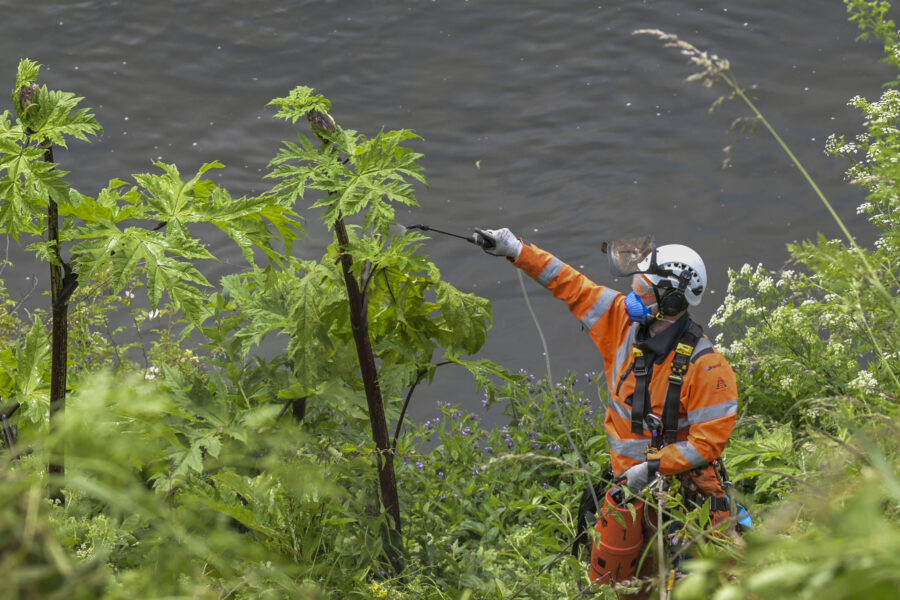Giant hogweed is one of a number of invasive non-native plant species that we work to reduce. The plant resembles a huge cow parsley when mature and can grow up to 16ft tall. It has toxic sap which can cause severe burns and blistering if it comes into contact with the skin.
Giant hogweed was introduced to the UK by Victorian plant collectors who added it to their exotic botanical collections without realising the problems that would be caused when the plants inevitably escaped from these cultivated collections. The river network is an ideal transportation network for giant hogweed with each plant able to produce between 20,000-50,000 seeds which can remain dormant in the soil for many years. Despite the challenging nature of this particular plant, our two decades of giant hogweed control have greatly reduced plant numbers on the main stem of the River Tweed. Our trained volunteers and contractors do the majority of work tackling the plants, but we do occasionally have to call on specialist help like these abseilers for hard-to-reach areas.
Our Invasives Project also works to reduce Himalayan balsam, Japanese knotweed and American skunk cabbage across the catchment. These plants can cause riverbank erosion and increased flood-risk and threaten the area’s native biodiversity including destroying spawning and nursery habitat for salmonid fish species.
This invasive species control work is an important element of the £25 million Destination Tweed river revitalisation project. This includes the creation of a 113-mile source to sea River Tweed Trail in addition to multiple environmental improvements. Tackling invasive plant species will help to make the river environment more accessible for river users, reduce riverbank erosion and improve plant and wildlife biodiversity. Tweed Forum is also tackling non-native species on the Northumberland coast as part of the EU LIFE Wader initiative.

